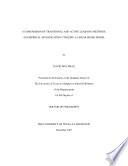
Active Learning in Primary Classrooms
A Case Study Approach
What do they mean by Active Learning? How can you inspire children to engage fully in their learning? How can you plan and organise a curriculum that ensures that children are actively involved in the learning process? This brand new text not only explores and examines the concept of active learning, but demonstrates how every teacher, new or experienced, can translate theory into practice and reap the rewards of children actively engaged in their own learning in the classroom. Central to the book is the series of extended case studies, through which the authors highlight examples of effective teaching and learning across the whole primary curriculum. They provide practical examples of planning, teaching and assessing to encourage, inspire and give confidence to teach in creative, integrated and exciting ways.
- ISBN 13 : 1317862007
- ISBN 10 : 9781317862000
- Judul : Active Learning in Primary Classrooms
- Sub Judul : A Case Study Approach
- Pengarang : Jenny Monk, Catherine Silman, Catherine Silman,
- Kategori : Education
- Penerbit : Routledge
- Bahasa : en
- Tahun : 2014
- Halaman : 272
- Halaman : 272
- Google Book : https://play.google.com/store/books/details?id=YiWsAgAAQBAJ&source=gbs_api
-
Ketersediaan :
Translating theory into action: The tools for effective teaching and learning In this
chapter, the principles that underpin the case studies are explored in the context
of active learning. In providing opportunities for childinitiated tasks while at the ...









